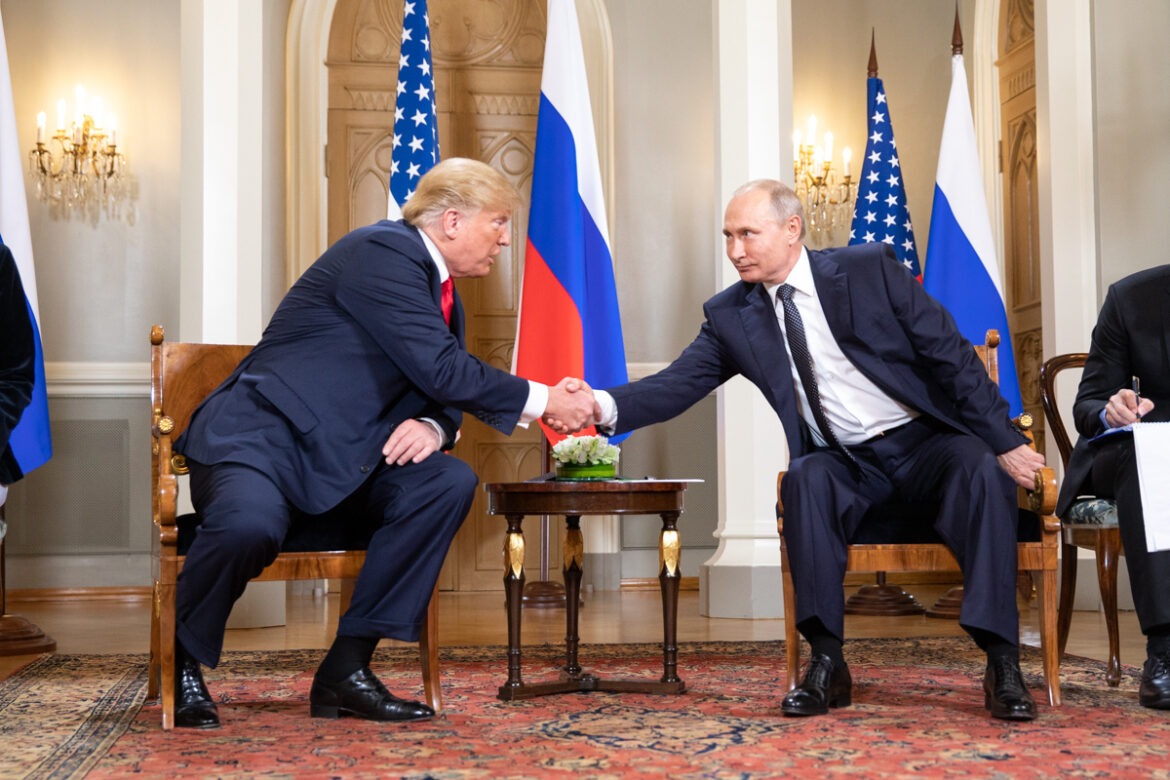“First, as we both agreed, we want to stop the millions of deaths taking place in the war with Russia/Ukraine,” the U.S. president wrote.
(JNS)
U.S. President Donald Trump held a telephone call with Russian President Vladimir Putin on Wednesday in which the two leaders agreed to hold talks to end the war in Ukraine.
In a post on his Truth Social platform, Trump described the call as “lengthy and highly productive.”
“First, as we both agreed, we want to stop the millions of deaths taking place in the war with Russia/Ukraine,” Trump wrote. “We agreed to work together, very closely, including visiting each other’s nations. We have also agreed to have our respective teams start negotiations immediately and we will begin by calling President Zelenskyy, of Ukraine, to inform him of the conversation.”
The Kremlin readout of the call largely aligned with Trump’s description of the conversation.
The move is the latest signal that Trump intends to follow through on breaking with his predecessor’s policy toward Russia, which involved close coordination with NATO and deference to Ukraine on when to begin negotiations.
Former President Joe Biden did not have any publicly acknowledged phone conversations with Putin after Russia’s full-scale invasion of Ukraine in February 2024, and no U.S. president has visited Russia since Barack Obama attended a G20 summit in St. Petersburg in 2013, before the Russian invasion of Crimea.
The call also comes one day after the Trump administration secured the release of Marc Fogel, an American school teacher detained in Russia, in exchange for Alexander Vinnik, a Russian national and convicted money-launderer who was due to be sentenced in June.
White House Press Secretary Karoline Leavitt said at the press briefing on Wednesday that Russia had also released an additional American and two Belarussian detainees but at their request did not name them.
Pete Hegseth, U.S. secretary of defense, at a meeting with European officials at the Ukraine Defense Contact Group in Brussels, described some elements of how the Trump administration views the war in Ukraine ending.
“We must start by recognizing that returning to Ukraine’s pre-2014 borders is an unrealistic objective,” Hegseth said, referring to Crimea. “Chasing this illusionary goal will only prolong the war and cause more suffering.”
Zelenskyy has long said that Ukraine’s eventual membership in NATO is the only way to stop Russian aggression toward the Eastern European country, but Hegseth ruled that out as well.
“The United States does not believe that NATO membership for Ukraine is a realistic outcome of a negotiated settlement,” Hegseth said. “Instead, any security guarantee must be backed by capable European and non-European troops. If these troops are deployed as peacekeepers to Ukraine at any point, they should be deployed as part of a non-NATO mission, and they should not be covered under Article Five.”
“To be clear, as part of any security guarantee, there will not be U.S. troops deployed to Ukraine,” he added.
Zelenskyy wrote on Wednesday following his call with Trump that he “agreed to maintain further contact and plan upcoming meetings” with Washington.
“No one wants peace more than Ukraine,” Zelenskyy wrote. “Together with the U.S., we are charting our next steps to stop Russian aggression and ensure a lasting, reliable peace. As President Trump said, let’s get it done.”
Image: Courtesy JNS Article


